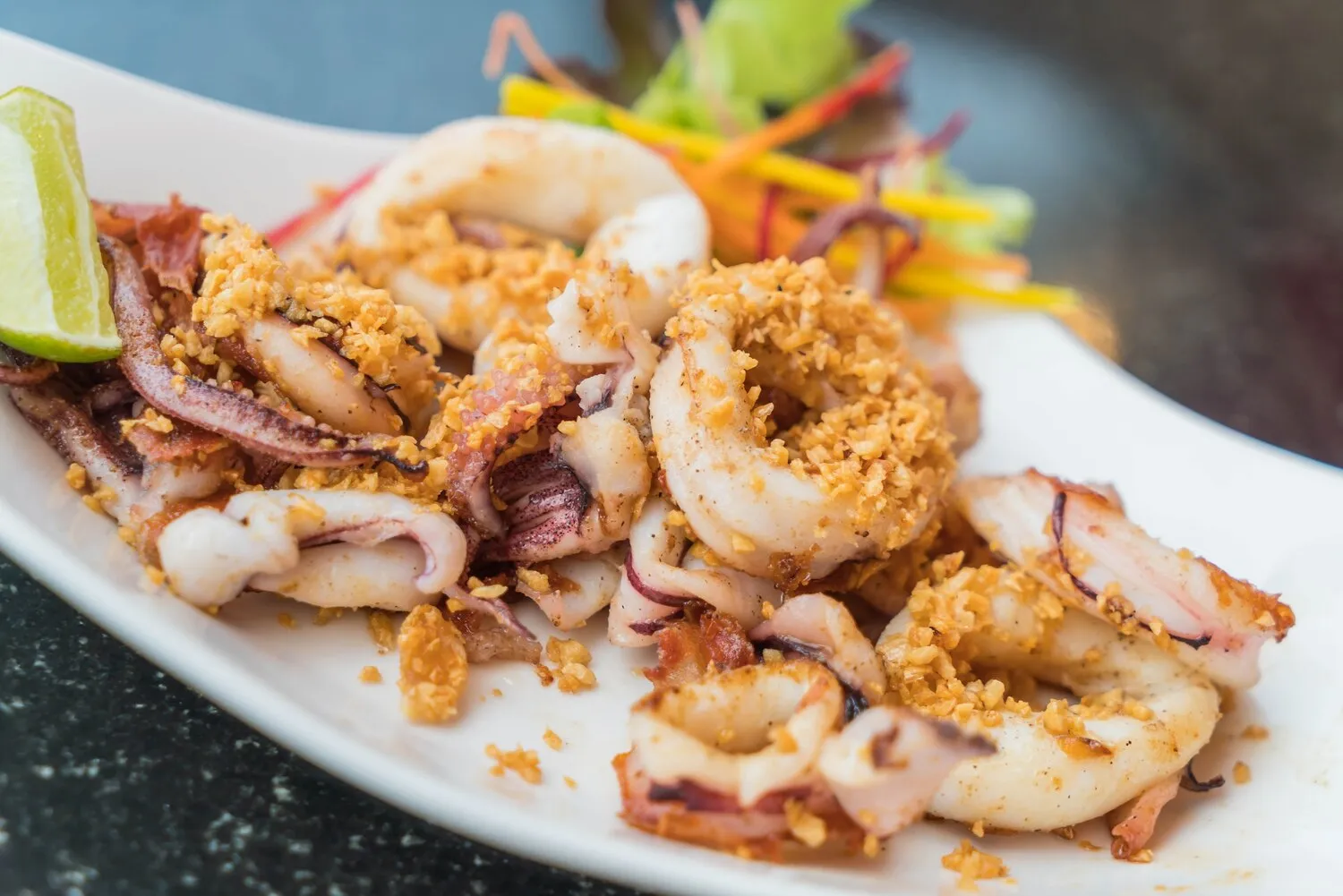
Fruits de Mer
A platter of fresh seafood.
Nutrition Facts
* The % Daily Value (DV) tells you how much a nutrient in a serving of food contributes to a daily diet. 2,000 calories a day is used for general nutrition advice.
Seafood platters have likely existed in coastal communities for centuries, wherever fresh seafood was abundant. The modern conception of Fruits de Mer, however, is rooted in the grand brasseries and seafood restaurants of 19th-century France, where displays of fresh catches became a symbol of luxury and abundance. The introduction of ice and refrigeration played a crucial role in preserving and transporting seafood, enabling its widespread availability and popularity.
Fruits de Mer is more than just a meal; it is a social and celebratory experience, often associated with special occasions and shared gatherings. It embodies the French appreciation for fresh, high-quality ingredients and the art of convivial dining.
Celebration and Sharing
Fruits de Mer is typically enjoyed as a shared appetizer or main course, fostering a sense of community and celebration. It is a dish that encourages conversation and interaction around the table.
Freshness and Quality
The emphasis on fresh, high-quality seafood reflects the French culinary philosophy of using the best available ingredients to create simple yet elegant dishes. The presentation of the platter is also important, showcasing the beauty and variety of the seafood.
Regional Variations
While Fruits de Mer is widely enjoyed throughout France, regional variations exist, reflecting the specific seafood available in different coastal areas. For example, a platter in Brittany might feature more lobster and langoustines, while one in the Mediterranean might include more sea urchins and other regional delicacies.
Fruits de Mer offers a symphony of oceanic flavors, ranging from briny and mineral-rich to sweet and delicate. The overall experience is one of freshness and variety, highlighting the natural tastes of the sea.
The flavors are predominantly briny and salty from the seawater environment. Oysters deliver a distinct mineral taste, while mussels and clams offer a slightly sweeter, more subtle salinity. Shrimp and crab contribute a sweetness balanced by a subtle, savory oceanic flavor. Lemons, mignonette sauce (vinegar and shallots), and horseradish often accompany the platter to enhance and contrast the seafood's natural tastes.
Order with Care
Ensure the seafood is visibly fresh and sourced from reputable suppliers. Ask about the origin and catch date of the seafood to ensure its quality.
Eat in Order
Start with the milder-flavored items, such as oysters and clams, and then move on to the richer, more flavorful seafood like shrimp and crab. This allows you to fully appreciate the nuances of each item.
Pairing Beverages
Dry white wines, such as Sauvignon Blanc, Muscadet, or Chablis, are classic pairings for Fruits de Mer. Their crisp acidity and citrus notes complement the seafood's flavors without overpowering them. A dry sparkling wine, like Champagne or Crémant, is also a celebratory option.
Handling Shells
Most Fruits de Mer platters will come with tools to help open and extract the seafood. Don't be afraid to ask your server for assistance if needed. A small bowl should also be provided to dispose of empty shells.
Explore additional Seafood dishes and restaurants
Explore SeafoodDiscover top dining spots and culinary experiences in Vlaardingen.
Explore VlaardingenLearn more about the food culture, restaurant scene, and culinary heritage of Netherlands.
Explore Netherlands